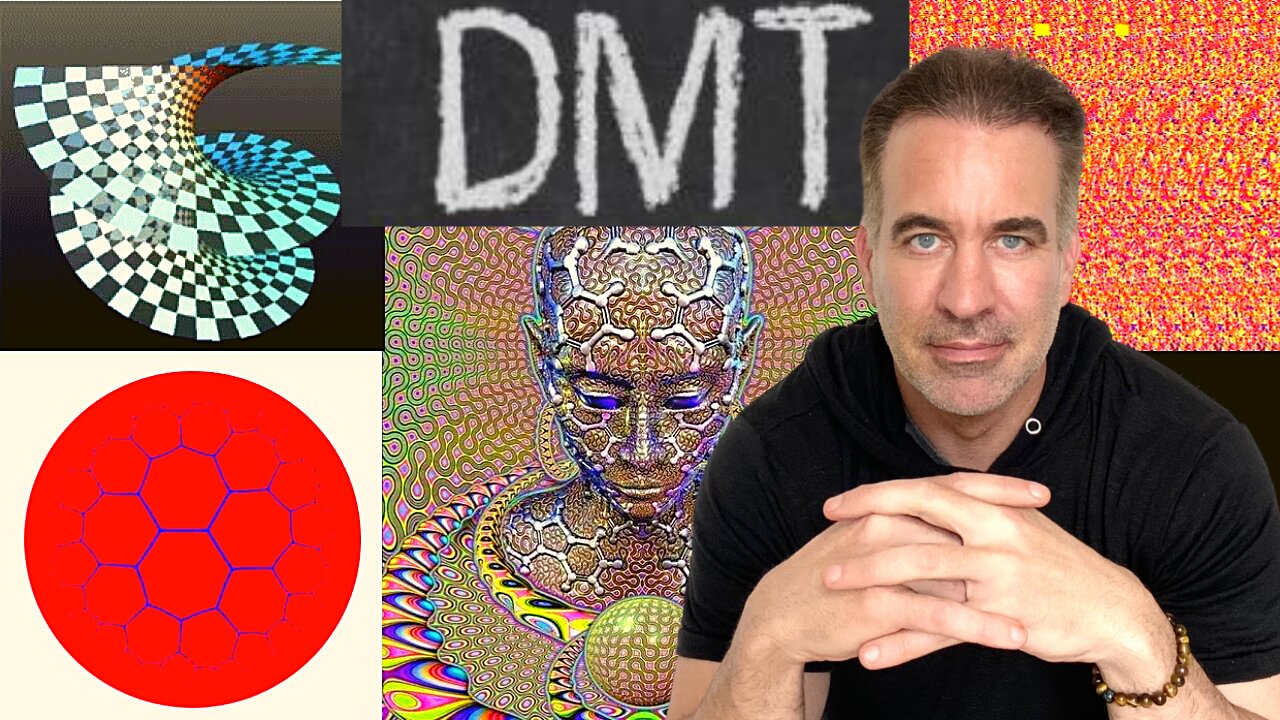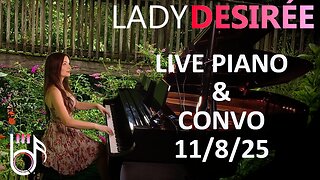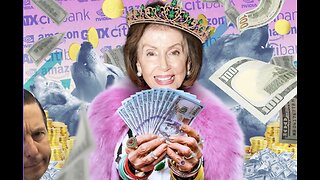Premium Only Content

USING DMT TO TREAT SUBSTANCE ABUSE & ADDICTION PROBLEMS
ENTHEON BIOMEDICAL CORP IS LOOKING INTO NONTRADITIONAL APPROACHES TO TREAT ADDICTION/SUBSTANCE ABUSE PROBLEMS. INTERESTING SMALL-CAP COMPANY WITH POSSIBLE SOLID UPSIDE POTENTIAL.
Entheon Biomedical Corp. ENTBF: Trading at 0.29….. Operates as a biotechnology research and development company. The Company focuses on developing and commercializing DMT-based psychedelic therapeutic products for treating addiction and substance use disorders. Entheon Biomedical serves clients worldwide.
N,N-Dimethyltryptamine (DMT or N,N-DMT) is a substituted tryptamine that occurs in many plants and animals and which is both a derivative and a structural analog of tryptamine.[3] It is used as a recreational psychedelic drug and prepared by various cultures for ritual purposes as an entheogen.
DMT has a rapid onset, intense effects, and a relatively short duration of action. For those reasons, DMT was known as the "business trip" during the 1960s in the United States, as a user could access the full depth of a psychedelic experience in considerably less time than with other substances such as LSD or psilocybin mushrooms.[5] DMT can be inhaled, ingested, or injected and its effects depend on the dose, as well as the chosen mode of administration. When inhaled or injected, the effects last a short period of time: about five to 15 minutes. Effects can last three hours or more when orally ingested along with an MAOI, such as the ayahuasca brew of many native Amazonian tribes.[6] DMT can produce vivid "projections" of mystical experiences involving euphoria and dynamic hallucinations of geometric forms.
DMT is a functional analog and structural analog of other psychedelic tryptamines such as O-acetylpsilocin (4-AcO-DMT), 5-MeO-DMT, psilocybin (4-PO-DMT), psilocin (4-HO-DMT), and bufotenin (5-HO-DMT). The structure of DMT occurs within some important biomolecules like serotonin and melatonin, making them structural analogs of DMT.
DMT is produced in many species of plants often in conjunction with its close chemical relatives 5-methoxy-N,N-dimethyltryptamine (5-MeO-DMT) and bufotenin (5-OH-DMT).[8] DMT-containing plants are commonly used in indigenous Amazonian shamanic practices. It is usually one of the main active constituents of the drink ayahuasca;[9][4] however, ayahuasca is sometimes brewed with plants that do not produce DMT. It occurs as the primary psychoactive alkaloid in several plants including Mimosa tenuiflora, Diplopterys cabrerana, and Psychotria viridis. DMT is found as a minor alkaloid in snuff made from Virola bark resin in which 5-MeO-DMT is the main active alkaloid.[8] DMT is also found as a minor alkaloid in bark, pods, and beans of Anadenanthera peregrina and Anadenanthera colubrina used to make Yopo and Vilca snuff, in which bufotenin is the main active alkaloid.[8][10] Psilocin and its precursor psilocybin, an active chemical in many psilocybin mushrooms, are structurally similar to DMT.
The psychotropic effects of DMT were first studied scientifically by the Hungarian chemist and psychologist Stephen Szára, who performed research with volunteers in the mid-1950s. Szára, who later worked for the United States National Institutes of Health, had turned his attention to DMT after his order for LSD from the Swiss company Sandoz Laboratories was rejected on the grounds that the powerful psychotropic could be dangerous in the hands of a communist country.
DMT is generally not active orally unless it is combined with a monoamine oxidase inhibitor (MAOI) such as a reversible inhibitor of monoamine oxidase A (RIMA), for example, harmaline. Without an MAOI, the body quickly metabolizes orally administered DMT, and it, therefore, has no hallucinogenic effect unless the dose exceeds the body's monoamine oxidase's metabolic capacity. Other means of ingestion such as vaporizing, injecting, or insufflating the drug can produce powerful hallucinations for a short time (usually less than half an hour), as the DMT reaches the brain before it can be metabolized by the body's natural monoamine oxidase. Taking an MAOI prior to vaporizing or injecting DMT prolongs and potentiates the effects.
Dimethyltryptamine (DMT), an endogenous ligand of sigma-1 receptors (Sig-1Rs), acts against systemic hypoxia, Research demonstrates DMT reduces the number of apoptotic and ferroptotic cells in mammalian forebrain and supports astrocyte survival in an ischemic environment. According to these data, DMT may be considered as adjuvant pharmacological therapy in the management of acute cerebral ischemia.
Induced DMT experiences can include profound time-dilation, visual, auditory, tactile, and proprioceptive distortions and hallucinations, and other experiences that, by most firsthand accounts, defy verbal or visual description. Examples include perceiving hyperbolic geometry or seeing Escher-like impossible objects.
L1XBPDDSNNQ42JCM
-
 0:52
0:52
NONCONFORMING-CONFORMIST
1 year agoBuckle Up-Foreclosures
35 -
 LIVE
LIVE
LadyDesireeMusic
4 hours ago $0.34 earnedDaily White Pill- Music & Chat
104 watching -
 LIVE
LIVE
Jeff Ahern
2 hours agoThe Saturday Show with Jeff Ahern
323 watching -
 LIVE
LIVE
Spartan
50 minutes agoHalo 3 MCC Throwback Charity Tournament for Men's Mental Health | Kuhlect Mental Riqhts Spartan
17 watching -
 LIVE
LIVE
GrimmHollywood
2 hours ago🔴LIVE • GRIMM HOLLYWOOD • SGT WILKY'S WARZONE PALOOZA 2 •
55 watching -
 20:36
20:36
It’s the Final Round
2 hours ago $2.49 earnedNBA Best Bets & Player Props | Full Analysis & Predictions, FREE Today (Saturday 11/9) November 9th
3.77K1 -
 LIVE
LIVE
The Real Tombliboos - Live Streaming
13 hours ago $0.51 earned🎮 Charity Stream for Extra Life 4 Kids! ❤ Supporting Texas Children’s Hospital ! 🙌
103 watching -
 LIVE
LIVE
Amarok_X
3 hours ago🟢LIVE | BF6 REDSEC | OPERATION 100 FOLLOWERS | VETERAN GAMER
18 watching -
 18:08
18:08
Professor Nez
3 hours ago⚠ Charlie Kirk WARNED America about Zohran Mamdani
7.05K44 -
 LIVE
LIVE
GritsGG
2 hours ago#1 Most Warzone Wins 3943+!
24 watching